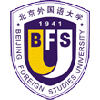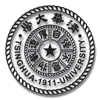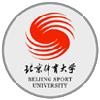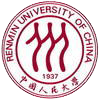Fakten und Bezirksführer zu Peking
Peking liegt am nordwestlichen Ende der nordchinesischen Tiefebene und ist die Hauptstadt der Volksrepublik China. Als Stadt untersteht Peking direkt der Gerichtsbarkeit der Zentralregierung und ist das nationale politische, kulturelle und devisenpolitische Zentrum. Fläche: 16.800 Quadratkilometer. Bevölkerung: 13,82 Millionen.
Aufgrund seiner Rolle im Leben und Wachstum Chinas gibt es für Reisende eine unvergleichliche Fülle zu entdecken, wenn sie Pekings alte Vergangenheit erkunden und seine aufregende Welt des 21. Jahrhunderts genießen. Wenn Peking 2008 die Olympischen Spiele ausrichtet, wird es der Welt etwas so Besonderes zeigen, dass jeder von Pekings neuesten Errungenschaften in Verbindung mit seiner alten Geschichte beeindruckt sein wird.
| Bevölkerung |
13 Millionen |
| Abteilungen auf Kreisebene |
18 |
| Gemeindeabteilungen |
273 |
| Landesvorwahl |
86 |
| Ortsvorwahl |
10 |
| Postleitzahl |
100000 - 102600 |
| Ethnien |
Han – 96 %
Mandschu – 2 %
Hui – 2 %
Mongolisch – 0,3 %
|
| Gemeinde |
16.808 km2 (6.489,6 Quadratmeilen) |
| Elevation |
43,5 Meter (142,7 Fuß) |
| Gemeinde |
14.930.000 (26.) |
| Dichte |
888/km2 (2.299,9/Quadratmeilen) |
| Urban |
Ca. 7,5 Millionen |
| Stadtbaum |
Chinesischer Lebensbaum, Japanischer Schnurrbartbaum |
| Stadtblume |
Chrysantheme, Chinesische Rose |
| Verwendete Spannung |
220 °C 240 Watt |
| Reiseführer für die Bezirke von Peking |
Es gibt 10 Bezirke und acht Kreise in der Stadt Peking. Innerhalb jedes Bezirks gibt es unterschiedliche „Gebiete“. Die interessantesten Gebiete sind das Stadtzentrum im Osten von Chaoyang und der zentrale Bezirk Dongcheng. Zu den Highlights der Bezirke/Gebiete zählen:
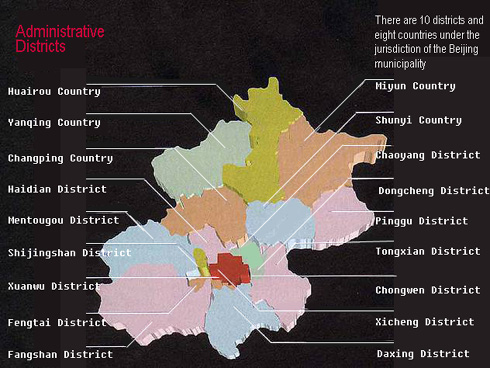
Bezirk Chaoyang Chaoyang
ist wahrscheinlich das kommerziellste und wohnlichste Viertel Pekings und hat für Besucher viel zu bieten. In diesem Bezirk befinden sich der Chaoyang Park, Sanlitun und das Viertel Jianguomen/Ritan (Geschäfts-/Botschaftsviertel).
Chaoyang Park
Dies ist ein wunderschöner Park, in dessen Umgebung sich viele beliebte Bars, Pubs, Restaurants, Geschäfte und Hochhäuser befinden. Und wenn Sie westliche Lebensmittelzutaten kaufen möchten, ist Jenny Lous der richtige Ort.
Chongwen District
liegt südlich der Stadt und ist ein etabliertes Viertel mit Boutiquen und Geschäften, die alles von Brillen bis zu Sportartikeln verkaufen. Obwohl Chongwen nicht so auffällig ist wie die anderen Viertel, ist es dennoch einen Besuch wert, da sich dort Sehenswürdigkeiten wie der Himmelstempel befinden. In diesem Viertel gibt es viele traditionelle chinesische Handarbeiten und andere einzigartige Nippes und Feilschen ist erlaubt.
Dongcheng District
This district is tourist central, boasting Tiananmen Square, The Forbidden City, and Mao's Mausoleum. Major hotels, such as the Beijing Hotel and the Grand Hyatt, surround this area. Serious shopping can be done in the neighboring Wangfujing area.
Fengtai District
Located southwest of Beijing, this is mainly an industrial area with several cultural and historical sites worth visiting such as, the China Space Museum, Fengtai Park, and Marco Polo Bridge.
Haidian District
Known also as the school district, this northwestern part of the city hosts Beijing and Tsinghua University, China's equivalent to Harvard and MIT. Because of the young student population, this area has a reputation for being hip, artsy and on the cutting edge. Also designated as a high-tech zone, this is where the aspiring computer and Internet start-ups are found. There are plenty of cheap, but good, restaurants and casual bars catered to the student crowd.
Jianguomenwai/Ritan
A wide mix of international faces can be seen here: tourists, businesspeople and local Chinese. The main street, Jianguomenwai, is a mad hustle of people, cars, and rickshaws, as well as vendors selling everything from CDs to high-end clothing. Major hotels and office buildings are found here, including the massive China World Hotel. Tourists can try their hand at bargaining at the Silk Market. Just a few blocks away, one can find peace and quiet in Ritan Park, the graceful tree-lined streets of the embassy area.
Sanlitun
Sanlitun is a loosely designated area of bars and pubs with Sanlitun Bar Street at its heart. Sanlitun Bar Street is Beijing's premier people-watching spot. On a warm sunny day, people sit at the sidewalk patios and chill out over drinks. There are also numerous funky shops selling everything from clothing and framed prints to Tibetan handcrafts. At night, the decadent side of Sanlitun is revealed and the clubs truly come to life.
Wangfujing
Located in the Dongcheng district, this is Beijing's main shopping street and a showcase of Beijing's economic progress to modernity. It is always crowded with shoppers and tourists alike. Partially closed to cars, pedestrians have free reign over the wide sprawling streets. Stop off at the Beijing Foreign Language Bookstore or go shopping at Beijing's mammouth-like shopping mall in Sun Dong An Plaza. Give your taste buds a surprise by dining on deep fried scorpion or any of the other culinary delights at the Wangfujing Night Market. If the idea of chomping on insects is not terribly attractive, upscale dining is available at the several four and five star hotels in the area.
Xidan/Xianwu
Like Wangfujing, this area is also known for shopping. But unlike Wangfujing, Xidan is a place where many local Chinese shops are located. So generally speaking, shoppers will find better prices here. Browse in the small shops and stalls for bargains on clothing, shoes and CDs. Several shopping centers such as Parksons and Xidan Department Store can be found here.
Given its size, Beijing is one of the safest cities in the world. There are relatively low reports of crime and theft. Still, that doesn't mean you should take the usual precautions. It is suggested that you keep valuables in a safe place, put your large sums of money in banks, keep your doors locked at night and do not walk alone at night.
With the entry of China into WTO and the upcoming Olympics in 2008, Beijing is quickly becoming a world-class city. Sanitation in Beijing is not what it used to mean to the foreigner, that of stinky toilets and litter all over the place. Still, there are squatting toilets, a novelty to the uninitiated Westerner.
|


